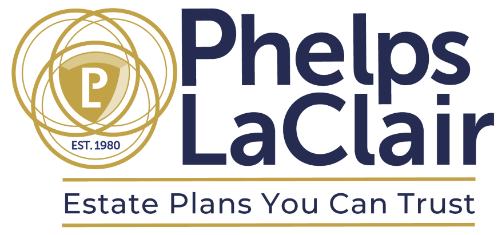
03 Aug 3 Ways to Pass on the Family Cabin
Developing a family cabin succession plan requires long-range planning that involves the whole family. This may seem obvious, but cabin owners should confirm that each child or other prospective new owner has an interest in becoming a cabin owner.
After it’s determined that there is cooperation and a common goal toward succession of the cabin, a detailed plan should be established to ensure an efficient transfer of ownership, either during the lifetime or upon the death of the owner. The plan should address maintenance, cost-sharing and budgeting, use, dispute resolution, creditor and divorce protection, and other considerations. Because the next generation of owners often have differing financial resources, family size, marital status, and opinions, these differences must be considered as well.
Of course, there is no one-size-fits-all planning option or form of ownership for transferring your cabin down to the next generation. But the following are some of the most common methods for keeping the cabin in the family:
Option 1: Direct Transfer of Ownership
A direct transfer of ownership is made by conveying an interest in the property, by deed, to the new owners (e.g., the children).
Pros. The primary benefit of a direct transfer of ownership is ease of conveyance. A direct transfer occurs by drafting and recording a deed transferring a cabin interest (or a Beneficiary Deed that delays the transfer of ownership until the death of the owner). There is little cost in a direct transfer.
Cons. Under certain circumstances, direct transfers can also have negative consequences. Direct transfers offer little or no protection from the creditor claims or divorce of a new owner. The direct transfer method also lacks a method for dispute resolution, transfer of interests, or protection when a new owner wants out. Due to the issues that can arise with common ownership from direct transfers, a co-tenancy, or tenants-in-common agreement, is often implemented to establish the rights, duties, and general terms of the agreement between common owners.
Option 2: The Family Cabin Trust
A Trust agreement is another form of ownership and conveyance of cabin property. A Trust is an agreement where a Grantor (you, the owner of the cabin) transfers property to a Trustee (typically you during your lifetime) to be held, administered, and distributed for the benefit of the Trust beneficiaries (e.g., your children or grandchildren). There are several forms of Trusts that can be utilized for a cabin plan. Trusts can be either revocable or irrevocable and there are several important tax and other considerations that may dictate which form of Trust is selected.
Pros. Trusts are often utilized in a cabin plan because the Trust agreement is an excellent tool to outline the terms of the agreement between the next generation of cabin owners. The Trust maker (typically the parent) can also designate a Trustee to be in charge of administering and overseeing the terms of the Trust after the Trust maker dies. The right kind of Trust will also be a powerful tool to protect the cabin from creditor claims, ex-spouses, and other liabilities of the future beneficiaries of the cabin.
Cons. Trusts involve ongoing administration, especially after the Trust maker dies. The Trust may also need to file a tax return after the Trust maker passes away. Some Trusts, if not properly drafted, may also lack flexibility to deal with changing circumstances after the Trust maker passes away.
Overall, a Trust can be an ideal tool to address all of the problems relating to cabin succession, but it doesn’t happen automatically. You will need to commit some time to talking through the issues with your family members and also with your attorney to ensure that your Trust contains all the right instructions and safeguards to protect the family cabin and keep it in the family for many enjoyable years (or even generations) to come.
Option 3: Business Entities / Limited Liability Companies (LLC)
The ownership of a family cabin can also be transferred into a business entity, such as a partnership or limited liability company (LLC). An LLC formed in Arizona tends to offer the highest protection and least maintenance compared to corporations and partnerships.
Pros. Several advantages in utilizing an LLC for cabin planning are as follows: flexibility in amending the controlling documents, ease of ownership transfer, established management provisions outlining the “basic rules” for the property (such as payment of operating expenses, procedures for transfer of member units or shares, maintenance, budgeting, governance, and dispute resolution), creditor protection (protection from divorce, bankruptcy or lawsuits) and limited personal liability.
Cons. The primary disadvantages of using an LLC for cabin planning relate to formality and cost. The costs of establishing the entity and maintaining it are new expenses to the LLC owners, although they are rarely prohibitive. The formalities that exist with LLCs do not exist with other forms of ownership. In some cases, tax returns are required for the LLC.
Planning for the succession of your cabin will help you and your family not only avoid a mess, but it will also provide peace of mind and foster communication within your family. If you already have a cabin succession plan, make sure you revisit it when a change in circumstance arises to ensure that the plan reflects the current intent of the parties.
Need help figuring out the best option to pass on your Arizona family cabin?
Give us a call today at (480) 892-2488 or email us at admin@PLEstatePlanning.com
Images used under creative commons license – commercial use Photo by Lili Kovac on Unsplash (10/27/2020)


